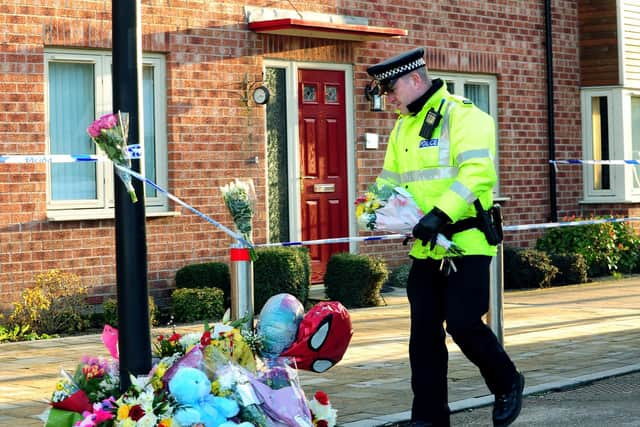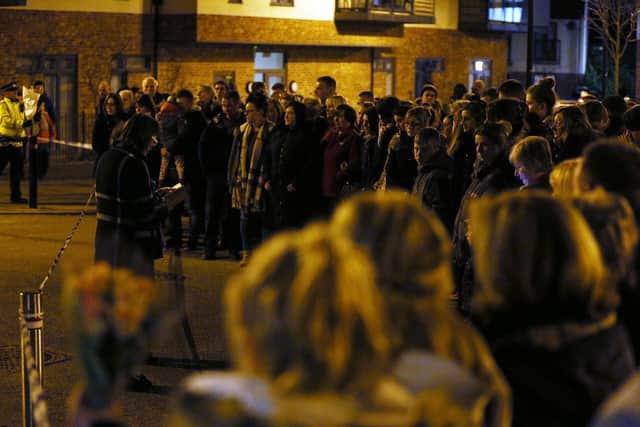'No signs' Leeds man would kill family before taking his life - review findings
and live on Freeview channel 276
A Domestic Homicide Review into the deaths of Paul and Geraldine Newman and their children concluded that nobody "any inkling that such a terrible chain of events was likely to unfold".
The bodies of Mrs Newman, 52, and the children - Shannon, 11, and Shane, six - were found at her home in Allerton Bywater on February 2, 2016.


Advertisement
Hide AdAdvertisement
Hide AdMr Newman, 42, was found dead at the foot of cliffs in Anglesey, Wales, hours later.
Their deaths triggered a review by Safer Leeds, in partnership with Leeds Safeguarding Children’s Partnership and Wakefield Community Safety Partnership, to see whether any lessons could be learned.
A report, now made public, says agencies had only been aware of one incident of domestic abuse between the couple in July 2013.
During a protracted physical assault, Mr Newman attacked his wife and threatened to kill her. He was convicted of assault and received a 17-week prison sentence.


Advertisement
Hide AdAdvertisement
Hide AdThe couple gradually reconciled after his release from jail but Mr Newman continued to display controlling and coercive behaviour such as checking his wife's mobile phone and turning up at her workplace daily.
The assault was the subject of a multi-agency review at the time but Mrs Newman did not access specialist domestic violence and abuse services offered. Her family suggested to the review panel that this was likely to have been because she did not want to expose the couple’s problems.
Report author Paul Johnston said Mrs Newman "made it clear to professionals, family, work colleagues and friends that she did not feel at risk of further violence from [Mr Newman] and that she would contact the police if the situation changed."
He said that Mr Newman had never expressed any thoughts of harming others, specifically his wife and children.
Advertisement
Hide AdAdvertisement
Hide AdIn his conclusion, Mr Johnston said: "None of the family, friends or work colleagues of [Mrs Newman] or of [Mr Newman] had any inkling that such a terrible chain of events was likely to unfold. The same was the case for the agencies with whom [Mrs Newman], [Mr Newman] and the children came into contact.
"The review has highlighted some learning from some organisations however, but generally, professionals that had been involved in the delivery of services were experienced, reflective, qualified, embracing and supportive.
"Agency responses were largely in line with expected practice and those few areas that fell short of what was required were addressed as this review has progressed."
The report was completed before inquests into the deaths took place at Wakefield Coroner's Court in March 2019. Senior Coroner Kevin McLoughlin recorded a verdict of unlawful killing for Mrs Newman and her children's deaths, and a verdict of suicide for Mr Newman's death.
Advertisement
Hide AdAdvertisement
Hide AdAlso in crime: Leeds mum Sinead Wooding planned to leave controlling husband who killed her - review findings
What recommendations were made?
The review identified key learning points for 11 organisations that had contact with the family at various points as well as the children's schools.
Lessons included that Leeds Domestic Violence Service should ensure that a referring agency is told when attempts to contact a victim in high-risk cases have not been successful.
Key areas of learning for Wakefield and District Domestic Abuse Service included the need to continually monitor and evaluate its performance and to develop clearer pathways for victims, to accurately record referrals, to share information with partner agencies and hand over cases that are out of its area.
Advertisement
Hide AdAdvertisement
Hide AdIt was also highlighted that the National Probation Service needed to make checks with children services across council districts if an address sits close to boundaries.
A total of 39 recommendations, focusing on areas such as training, risk assessments and referral processes, were made to 10 different organisations and the children's schools.
Mr Johnston recommended that Leeds Children's Social Work Service reviewed its training and development framework in relation to domestic abuse, with particular emphasis on risks associated with separation where there has been domestic abuse, understanding the pathology of domestic abuse perpetrators. and agency response where abuse victims have distanced themselves from family and other support networks.
Various recommendations were made to the schools, including support for inexperienced headteachers to build safeguarding skills, having a designated lead practitioner for domestic violence and greater collaboration between schools teaching children from the same family.
Advertisement
Hide AdAdvertisement
Hide AdIt was recommended that Leeds charity Catholic Care should run mandatory domestic abuse training for all its staff, make the issue part of its monthly team meeting agenda and deliver a new domestic abuse programme to young people aged six to 18 in Catholic schools across the diocese.
Also in crime: 'Delete immediately' - Scam text targeting isolating families whose kids have free school dinners
What is a Domestic Homicide Review?
A Domestic Homicide Review looks at the circumstances in which the death of a person aged over 16 has, or appears to have, resulted from violence, abuse or neglect by a relative or partner, or a member of the same household.
Its purpose is to:
1. Establish what lessons are to be learned about the way in which local professionals and agencies work individually and together to safeguard victims.
Advertisement
Hide AdAdvertisement
Hide Ad2. Identify clearly what those lessons are, how they will be acted upon and within what timescale, and what is expected to change as a result.
3. Apply these lessons to service responses, including changes to policies and procedures as appropriate.
4. Prevent domestic violence homicide and improve service responses for all victims and their children.
